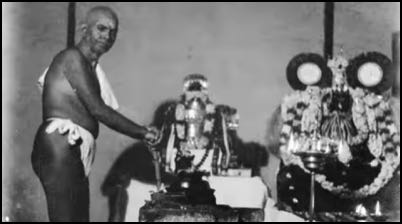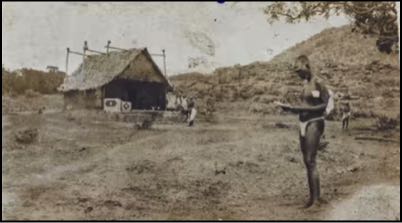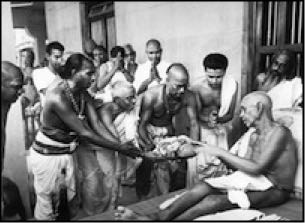

Free
eBooks
Spiritual-Teaching.org
Those who personally knew Sri Ramana Maharshi are fast disappearing and a new generation of devotees, admirers and self-promoters are beginning to make their presence felt. The name of Bhagavan Sri Ramana Maharshi is gaining popularity as a lodestone of Advaita Vedanta. Amidst the swirl of genuine and would-be gurus, they cite Sri Ramana as the final authority, more often than not for their diverse explanations, based on limited knowledge and experience, however well meant. We see now academics, writers, and commentators putting forth their interpretation of what Sri Ramana wrote and said. Inevitably even with the best will in the world, there are presumptions, misunderstandings and plain wrong conclusions. From being a person who engendered awe and respect his name is becoming a commodity bandied about for reasons that have little to do with the reality of who he is. Fortunately, there are a few who after years of study and application, are true to the teaching in their writings and talks.
We need to be very careful here not to become entangled with ‘he said this’, ‘he said that’, to justify an argument as to what we think is the truth. The only standard we have is ourselves and the reason we come to such a being as Sri Ramana is because we are dissatisfied. We seek harmony between the different conflicting elements within us. We do and say things we later regret and that is because we are not completely conscious of what we say or do. We are a mystery to ourselves.
Sri Ramana offers us a clear and lucid description of who we think we are and how to be liberated from false identification. He was not interested in philosophy per se but a practical way to be liberated from the wheel of samsara, empirical existence with its never-ending cycle of suffering.
His infallible answer to all questions about identity was what his devotees called his brahma astra, that is, a weapon that annihilates all objections and goes right to the heart of one’s dilemma. Who am I? is a persistent question to which we have no definite, immovable answer. Yes, we can say we are this or that but the conviction can fade as quickly as unsatisfactory guesses and they become mere inconsequential moments with no gravitas. Nothing seems to stick. Who am I? shreds all our thoughts so that they seem irrelevant to the core issue, one’s sense of genuine being.
When I first came to the ashram there were still many people who had closely interacted with Sri Ramana. They looked like quite ordinary people and had no pretensions. It was easy to overlook them. And I did, until one day I began to realise that there was communication with them but in an understated, silent manner. They knew me and I thought I ‘knew’ them. Like roaming magnets, people moved about the ashram on noiseless feet with a minimum amount of wash in their wake. Looking back on it, I see that the lack of words did not impede communication but rather it was enhanced by the quiet. I remember hearing that Visvanatha Swami said that the book which recorded conversations with Sri Ramana in the 1930s, Talks with Ramana Maharshi, did not give an accurate picture of Sri Ramana’s daily activities in the ashram. He was not voluble and in fact, there were times when he would go for days without saying a word. His daily routine was so fixed that the day worked like clockwork. To facilitate that there were at least two clocks in the Old Hall where he sat or reclined on the couch to receive visitors, one of which, the wall clock, is still there today. Everyone knew where Bhagavan Ramana was at any time of day. It was a reassuring constant in the lives of devotees. It is a paradox that for one who lives in the eternal now, the passing of time was marked so precisely.
But before I move on, there is one interesting phenomenon that has evolved. In the early days when Sri Ramana was at Virupaksa and Skanda Ashram, he was referred to as ‘The Maharshi’, as per the title given to him by a distinguished disciple, Sri Ganapati Muni. In many of the early reminiscences, he was referred to as The Maharshi. In personal conversations, people would also say Bhagwan or Bhagavan, depending on whether the person was from north India or the south. Now the title The Maharshi is rarely used except in books to give him his full historical title.
He later increasingly became known in print and conversational reference by the honorific Bhagavan.
Today among more traditional people he is generally respectfully referred to as Bhagavan, which in Sanskrit means Lord, revered person, venerable. It comes from the root bhag meaning good fortune, splendour, power, and van meaning possessor. One who is a Bhagavan possesses six divine qualities: knowledge (jnana), strength (bala), lordship (aisvarya), potency (sakti), virility (virya), and splendour (tejas).
There is a new tendency to simply call him Ramana, which has gained currency, particularly among Westerners whose tendency is to democratise names and tiles. To the ears of those brought up and educated with a sense of decorum, the familiarising of his name is jarring and disrespectful. It lacks proper reverence for the context from which Bhagavan Ramana came. He was no ordinary person. Once we begin to trivialise someone worthy of respect, we are also by implication, dismissive of our inner worth. The sense of honour is a causality of our modern age.
The above-mentioned trend is interesting because it indicates the shift in perception about Bhagavan Sri Ramana Maharshi which is concomitant with how he is now viewed. He was first known as Brahmana Swami because nobody knew his name or anything about him really when he first sat in the temple precincts of the Sri Arunachaleswara Temple except that he was born into the brahman caste because of certain observed behavioural patterns. He then became The Maharshi because of his profound insight into the nature of the human mind. Rshi means a ‘seer’ in Sanskrit and indicates one who sees into the nature of existence. The Vedas, the sacred texts of Hindus, were created by rshis who saw into the mysteries of life and recorded what they saw. They were subsequently chanted for thousands of years exactly as first enunciated. The Vedas are one of the prodigious marvels of human achievement and a timeless repository of great secrets.
The reason for all this information is that the ‘person’ who we know as Sri Ramana is not a stationary object about whom we may presume certain facts.
Later in life when he was recognised as a great guru, someone who knew him as a young boy in his native village Thiruchuzhi, near Madurai, came to see him expecting the very same individual but found to his puzzlement, that that boy with his remembered characteristics was not to be found. Sri Ramana laughed and said that that person was long gone.
It would be a mistake to consider that Si Ramana as we commonly call him, is an individual as we know it. For convenience, we do identify him with a historical individual but once we come closer to this marvel, we slowly begin to realise that we cannot capture ‘him’ in any normal category.
An analogy to this paradox would be the discoveries of 20th Century physics. Scientists noticed a phenomenon about light, that it could exhibit the properties of a particle as well as a wave according to the experimental conditions. The other extraordinary aspect of this is that the observer affected the object under scrutiny. And that it is not possible to measure precisely both the position and speed of a light unit. The more exact one measures say the speed the less precise the measurement of the position and vice versa.
In other simplified words, they could not apprehend it and study it in a static environment. Everything is fluid.
( A short time later when he was moved to the small temple Gurumurtham, on the town’s outskirts, he revealed his birth name and where he came from. )
We could well say the same about Sri Ramana. With the changing expectations of who Sri Ramana is, we can also say that externally he changes with the circumstances. He can become who we think he is so that we may benefit from His grace. He can be a father, a friend, a loving mentor, an impassive bystander. He is both a flexible personage as well as an impersonal, unshakeable principle.
Something ‘happened’ to him at Madurai in 1896 that radically and irrevocably changed the course of his existence and as a later consequence, all those who were drawn to his orbit and gratefully succumbed to his, for want of a better word, magic.
To those who come to him either physically or in spirit, he will reveal himself in the best means possible according to one’s openness to transformation and one’s unique propensities.
Though apparently an individual personality, he was also a radiant principle unbounded by time and space.
As to grabbing and holding him tight, we may as well try to catch the wind.
Enter here to return to Contents
Letter # 18 - Bhagavan Sri Ramana Maharshi: A Person or a Principle?
